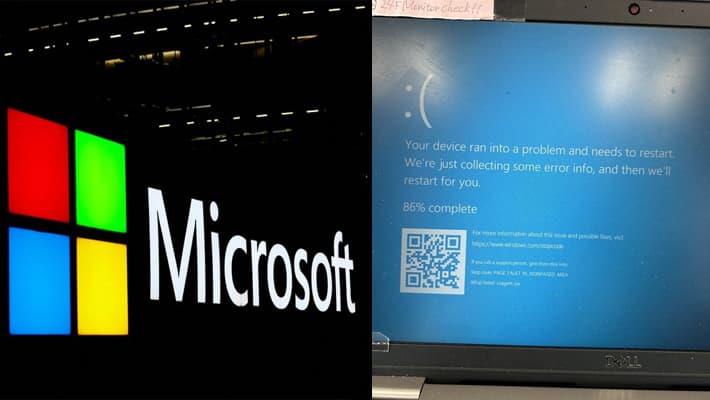Gartner Announces Top 10 Strategic Technology Trends for 2023

Gartner has released its annual list of the top 10 strategic technology trends organizations should investigate in the year ahead.
Analysts speaking at the Gartner IT Symposium/Xpo in the US this week said the strategic technology trends for 2023 are built around three themes: optimization, scaling and pioneering. Technology helps organizations optimize resilience, operations, or trust and scale vertical solutions and products. provide and open up new forms of engagement, rapid response or opportunities.
Gartner Distinguished VP Analyst Frances Karamouzis said:
However, analysts say that in 2023, just providing technology will not be enough. Three major themes are influenced by environmental, social and governance (ESG) expectations and regulations, leading to a shared responsibility to apply sustainable technologies.
Gartner Distinguished VP Analyst David Groombridge said: “Sustainable by default” as a goal requires sustainable technologies. “
Key strategic technology trends for 2023 include:
sustainability
Sustainability encompasses all strategic technology trends for 2023. In his recent Gartner survey, the CEO reports that environmental and social change are now his top three priorities for investors, following profit and bottom line.
This means executives must invest more in innovative solutions designed to meet ESG demands to meet sustainability goals, analysts say.
We do this by improving the energy and material efficiency of our IT services, enabling enterprise sustainability through technologies such as traceability, analytics, renewable energy and AI, and enabling our customers to achieve their unique goals. Gartner says organizations need a new sustainable technology framework for deploying IT solutions. sustainability goals.
Pioneer
metaverse
Gartner defines the Metaverse as a collective virtual 3D shared space created by the fusion of virtually augmented physical and digital realities. The metaverse is persistent and offers an enhanced and immersive experience.
Gartner expects the complete metaverse to be device agnostic and not owned by a single vendor. It will have a virtual economy of its own, made possible by digital currencies and non-fungible tokens (NFTs).
Gartner predicts that by 2027, more than 40% of large organizations worldwide will use a combination of Web3, AR Cloud, and digital twins in Metaverse-based projects aimed at increasing revenue I predict it will.
super app
A super app combines the functionality of apps, platforms, and ecosystems into a single application. Not only does it have its own set of features, but it also provides a platform for third parties to develop and publish their own mini-apps. Gartner predicts that by 2027, more than 50% of the global population will actively use multiple super apps every day.
Karamouzis says: “
Adaptive AI
Adaptive AI systems continually retrain their models, learning on new data at runtime and within the development environment to quickly adapt to changes in real-world conditions that were not anticipated or available during initial development. It is intended to
Use real-time feedback to dynamically change what you learn and adjust your goals. This makes it suitable for operations that require optimized responses to rapid changes in the external environment and changes in corporate goals.
optimisation
digital immune system
Gartner found that 76% of teams responsible for digital products are now also responsible for revenue generation. CIOs are looking for new practices and approaches that their teams can adopt to reduce risk, increase customer satisfaction, and deliver high business value.
The Digital Immune System provides such a roadmap. Digital Immunity combines data-driven insights into operations, automated extreme testing, automated incident resolution, software engineering within IT operations, and security within the application supply chain to improve system resilience and stability. increase the
Gartner predicts that organizations that invest in building digital immunity will reduce system downtime by up to 80% by 2025, leading directly to increased revenue.
Applied Observability
Observable data reflects digitized artifacts such as logs, traces, API calls, dwell times, downloads, file transfers, etc., and is visible when a stakeholder performs some action. Applied Observability feeds back these observable artifacts in a highly organized and integrated approach to accelerate organizational decision-making.
Karamouzis says: It is powerful because it increases the strategic importance of the right data at the right time to take rapid action based on confirmed stakeholder behavior, not intent. When strategically planned and successfully executed, applied observability is the most powerful source of data-driven decision-making. “
AI trust, risk and security management
Many organizations are ill-prepared to manage AI risk. Gartner says organizations must implement new capabilities to ensure model reliability, reliability, security, and data protection. AI Trust, Risk, and Security Management (TRiSM) requires participants from different business units to work together to implement new countermeasures.
scale
Industrial cloud platform
Industry Cloud Platforms offer a combination of SaaS, Platform as a Service (PaaS), and Infrastructure as a Service (IaaS) with an industry-specific set of modular capabilities to support business use cases in specific industries. Offers.
Enterprises can use the industrial cloud platform’s packaged capabilities as building blocks to compose their own and differentiated digital business initiatives, avoiding lock-in while increasing agility, innovation, and go-to-market. You can shorten the time to Gartner predicts that by 2027, more than 50% of enterprises will use industry cloud platforms to accelerate their business initiatives.
platform engineering
Platform engineering is the discipline of building and operating self-service in-house developer platforms for software delivery and lifecycle management. The goal of platform engineering is to optimize the developer experience and help product teams deliver customer value.
Gartner predicts that 80% of software engineering organizations will have a platform team by 2026, 75% of which will include a developer self-service portal.
Wireless value realization
While no single technology dominates, businesses are using a variety of wireless solutions to accommodate any environment, from office Wi-Fi to mobile device services to low-power services to wireless connectivity. will be
Gartner predicts that by 2025, 60% of businesses will use five or more wireless technologies simultaneously. When networks go beyond pure connectivity, built-in analytics are used to gain insights and low-power systems harvest energy directly from the network. This means that the network becomes a direct source of business value.
This year’s top strategic technology trends highlight the trends that will pose the greatest disruption and opportunity in the next five to ten years. Gartner clients can read more in the Gartner Special Report, Top Strategic Technology Trends for 2023.
Gartner Announces Top 10 Strategic Technology Trends for 2023
Source link Gartner Announces Top 10 Strategic Technology Trends for 2023



